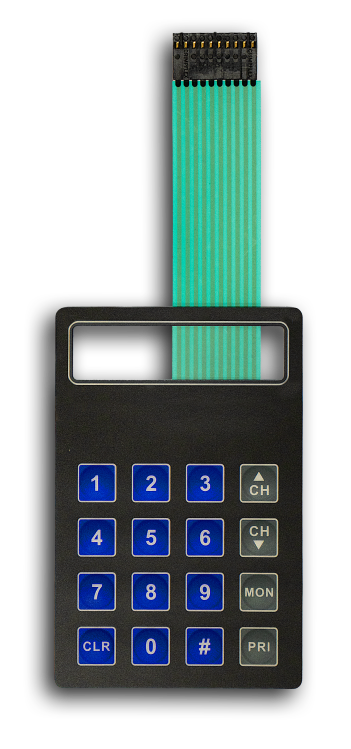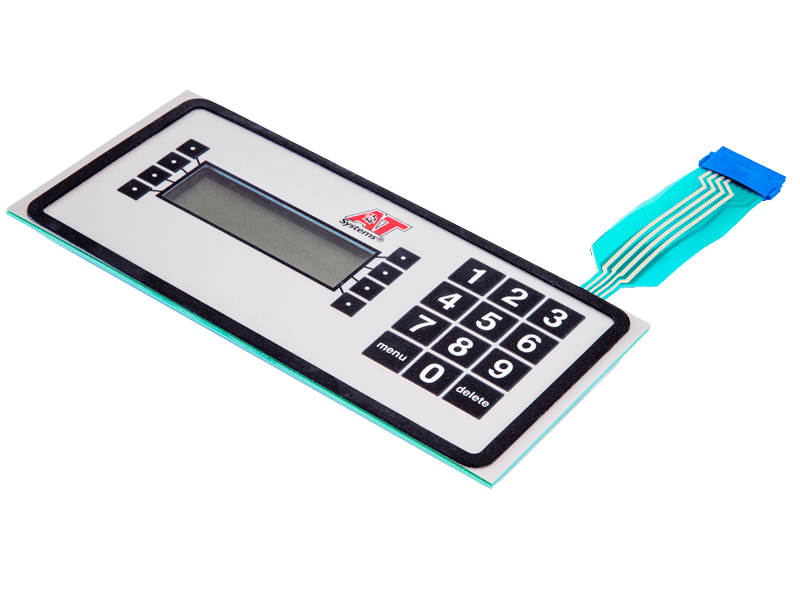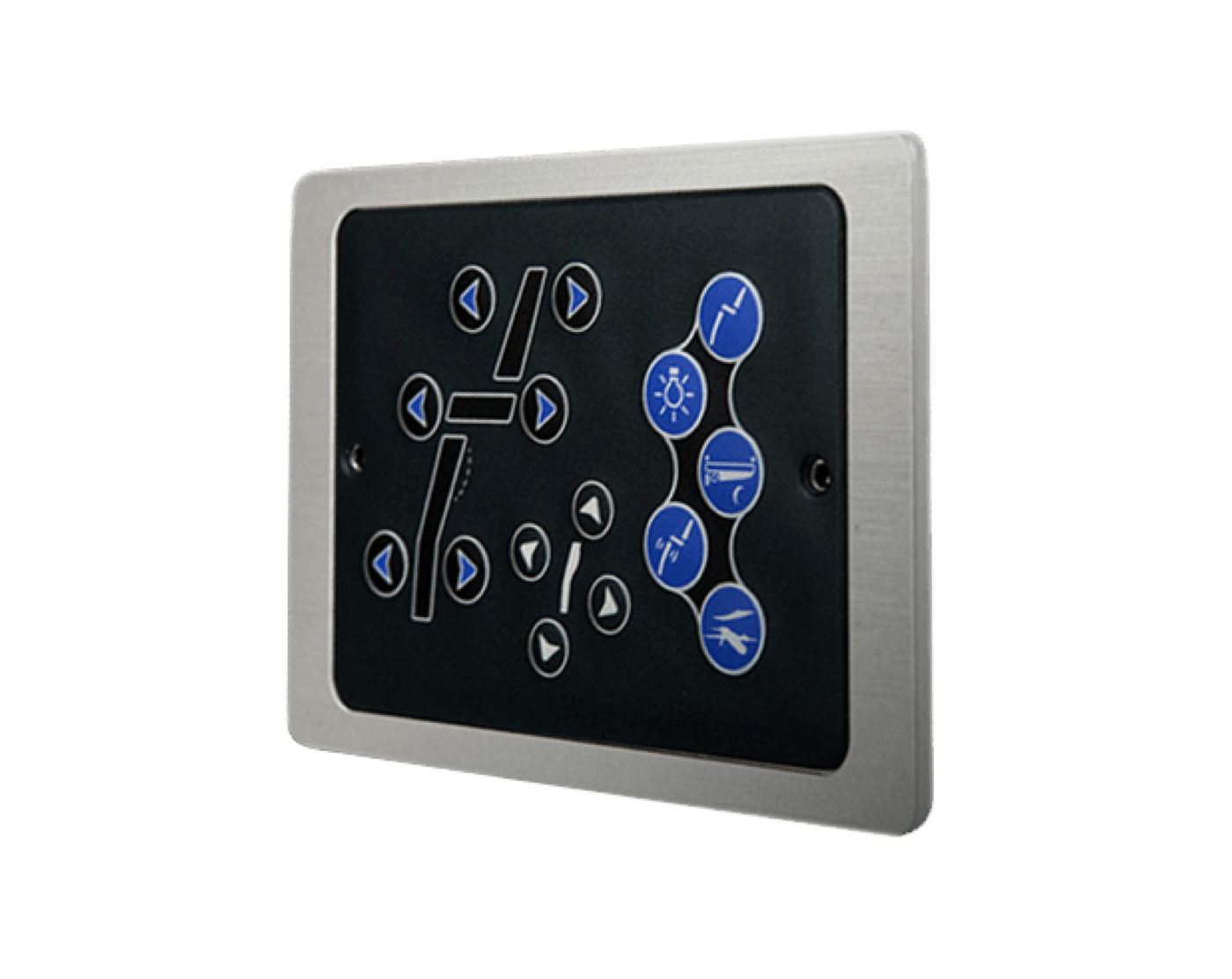A Comprehensive Guide to Membrane Switches for Product Designers
A Comprehensive Guide to Membrane Switches for Product Designers
Blog Article
Comprehending the Importance of Membrane Switches in Customer User Interfaces
Membrane switches are indispensable elements in the design of efficient interface, facilitating not just capability yet likewise enhancing aesthetic appeal and individual communication. Their one-of-a-kind functions, such as resistance to ecological factors and customizable layouts, make them ideal for a varied variety of applications across multiple industries. As we discover the future trends and various benefits related to Membrane technology, it comes to be clear that these buttons are extra than simply elements; they stand for a convergence of development and usefulness. The ramifications of this technology on user experience deserve examining further.
What Are Membrane Switches?

The spacer layer, which includes sticky properties, permits the splitting up of the circuit layer from the overlay, making sure that the switch stays in a non-activated state until pushed. When stress is applied to the overlay, it presses the spacer layer, bridging the void and completing the circuit in the underlying layer. This layout not just reduces the physical area required for conventional mechanical buttons but also enhances the longevity of the tool, as Membrane switches are generally immune to dirt, wetness, and various other ecological elements.
Typically located in applications varying from customer electronic devices to medical tools, Membrane switches are indispensable to contemporary technology, providing a effective and straightforward interface that aligns with modern style needs.
Advantages of Membrane Buttons
While various switch modern technologies exist, Membrane Switches deal unique advantages that make them particularly preferable in different applications. One of the main advantages of Membrane buttons is their portable style, which enables for space-saving executions in gadgets where realty is limited. Their slim account not just improves visual allure yet also facilitates lightweight construction.
Another considerable benefit is their resistance to environmental elements. Membrane buttons are commonly secured against wetness, dirt, and impurities, making them excellent for use in demanding atmospheres, such as clinical gadgets and industrial tools. This toughness prolongs the life-span of the button, minimizing upkeep costs and enhancing integrity.
Moreover, Membrane buttons can be personalized to meet particular design requirements, including special graphics and colors that boost individual communication. Their tactile comments choices can also be tailored to offer an enjoyable user experience. In addition, Membrane switches are affordable, specifically in high-volume applications, as they can be produced effectively.
Applications in Different Industries

In the consumer electronics industry, Membrane buttons are prevalent in gadgets such as microwaves, washing machines, and remotes. Their tactile responses and aesthetic options enhance customer experience while offering a smooth, modern-day look. Additionally, auto makers use Membrane buttons in dashboard controls and infomercial systems, where room is limited, and customer engagement is essential.
In addition, the commercial field leverages Membrane switches in control panels for equipment and equipment, permitting user-friendly procedure in often rough atmospheres. Their resistance to chemicals and wetness ensures long life and reliability in these applications. Generally, the versatility of Membrane Switches contributes considerably to their widespread usage, making them vital in various technological domains.
Layout Considerations for Membrane Switches

When developing Membrane switches, a number of vital considerations need to be considered to make sure optimum performance and individual experience. First of all, the selection of materials is important; picking long lasting, top notch substrates can improve the switch's longevity and resistance to environmental elements such as additional reading dampness and temperature fluctuations.
Secondly, the style of the visuals overlay should prioritize quality and simplicity of usage. Symbols and message must be legible, and the layout needs to facilitate intuitive communication (membrane switches). In addition, tactile feedback is crucial; incorporating a tactile dome or other systems can boost the individual experience by providing physical verification of activation
One more essential factor is the switch's electric efficiency. Developers must guarantee that the conductive traces are correctly designed to lessen resistance and stay clear of signal interference. This involves assessing the called for actuation force and ensuring compatibility with the electronic components they will certainly user interface with.

Future Trends in Membrane Technology
As technology continues to breakthrough, Membrane switches are poised to develop substantially, driven by technologies in materials and producing techniques. One arising trend is the consolidation of advanced products, such as conductive inks and versatile substrates, which enhance durability and lower the total weight of Membrane buttons. These materials not only boost the responsive feedback however likewise enable the design of buttons that can stand up to harsher ecological conditions.
Additionally, the integration of touch-sensitive innovations is changing standard Membrane Switches into even more interactive individual interfaces. Capacitive touch sensing units installed within Membrane switch panels can more information offer a more intuitive and receptive customer experience, aligning with the expanding demand for sleek, modern-day designs in consumer electronics.
In addition, innovations in printing strategies, such as digital and 3D printing, allow fast prototyping and customization of Membrane switches. This flexibility permits makers to respond faster to market demands and consumer preferences.
Finally, sustainability is ending up being a considerable emphasis, with makers discovering environmentally friendly products and processes. As these fads unfold, the future of Membrane modern technology promises boosted performance, aesthetic appeal, and ecological duty, solidifying their duty in innovative interface across different markets.
Final Thought
In conclusion, Membrane Switches stand for a crucial component in the style of individual interfaces, incorporating capability with aesthetic versatility. As innovations in modern technology proceed, the advancement of Membrane switches is expected to further refine individual interfaces, driving advancement and enhancing functionality in an increasingly complicated technical landscape.
Membrane switches are important parts in the design of efficient user interfaces, promoting not only functionality however also improving visual allure and individual interaction.Membrane Switches serve as an essential component in numerous user interfaces, facilitating a seamless interaction between users and electronic tools.While numerous button modern technologies exist, Membrane Switches deal unique benefits that make them particularly preferable in numerous applications.Moreover, Membrane their website switches can be tailored to satisfy particular layout requirements, including unique graphics and colors that improve user communication.In conclusion, Membrane Switches stand for an important part in the layout of individual interfaces, incorporating capability with visual versatility.
Report this page